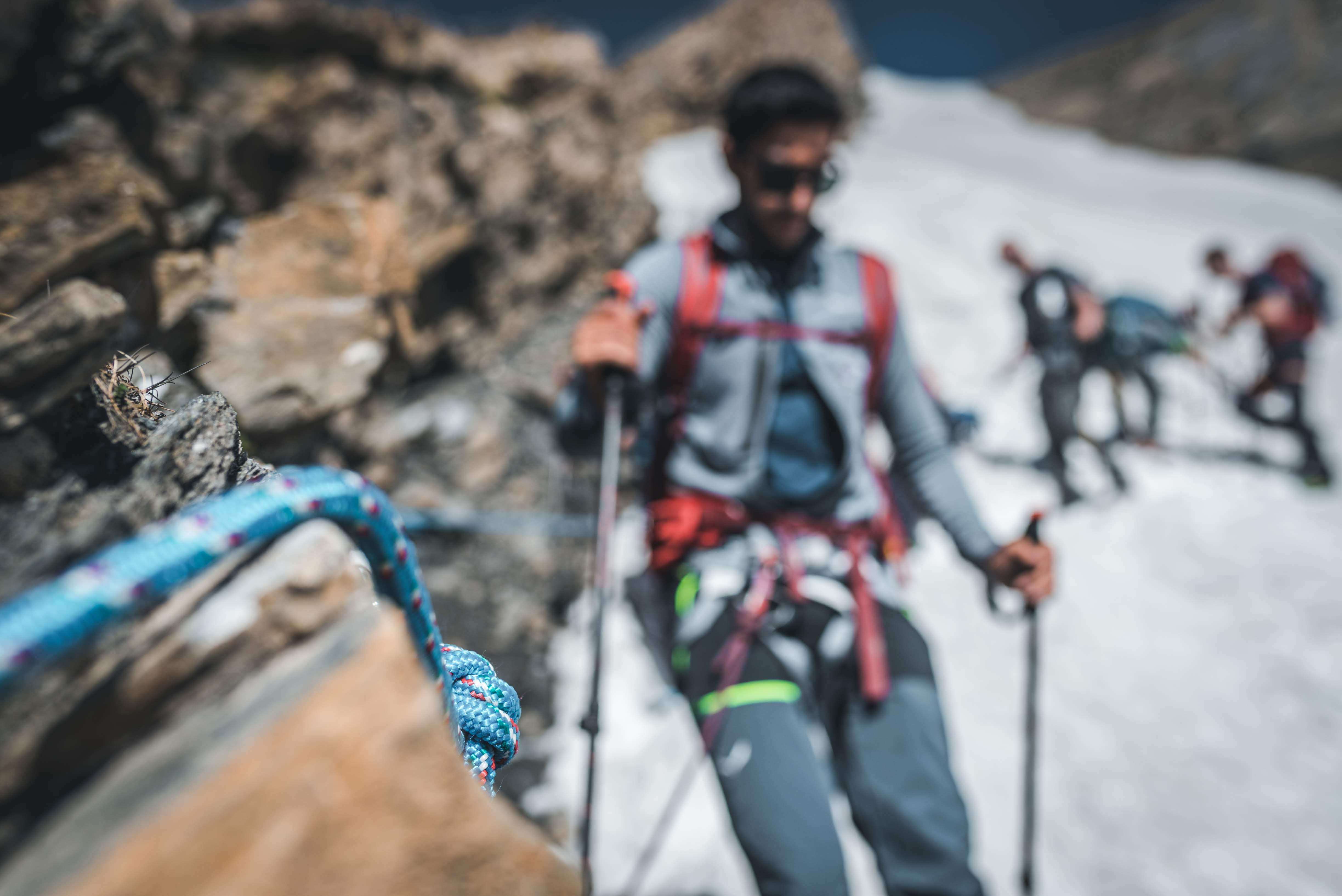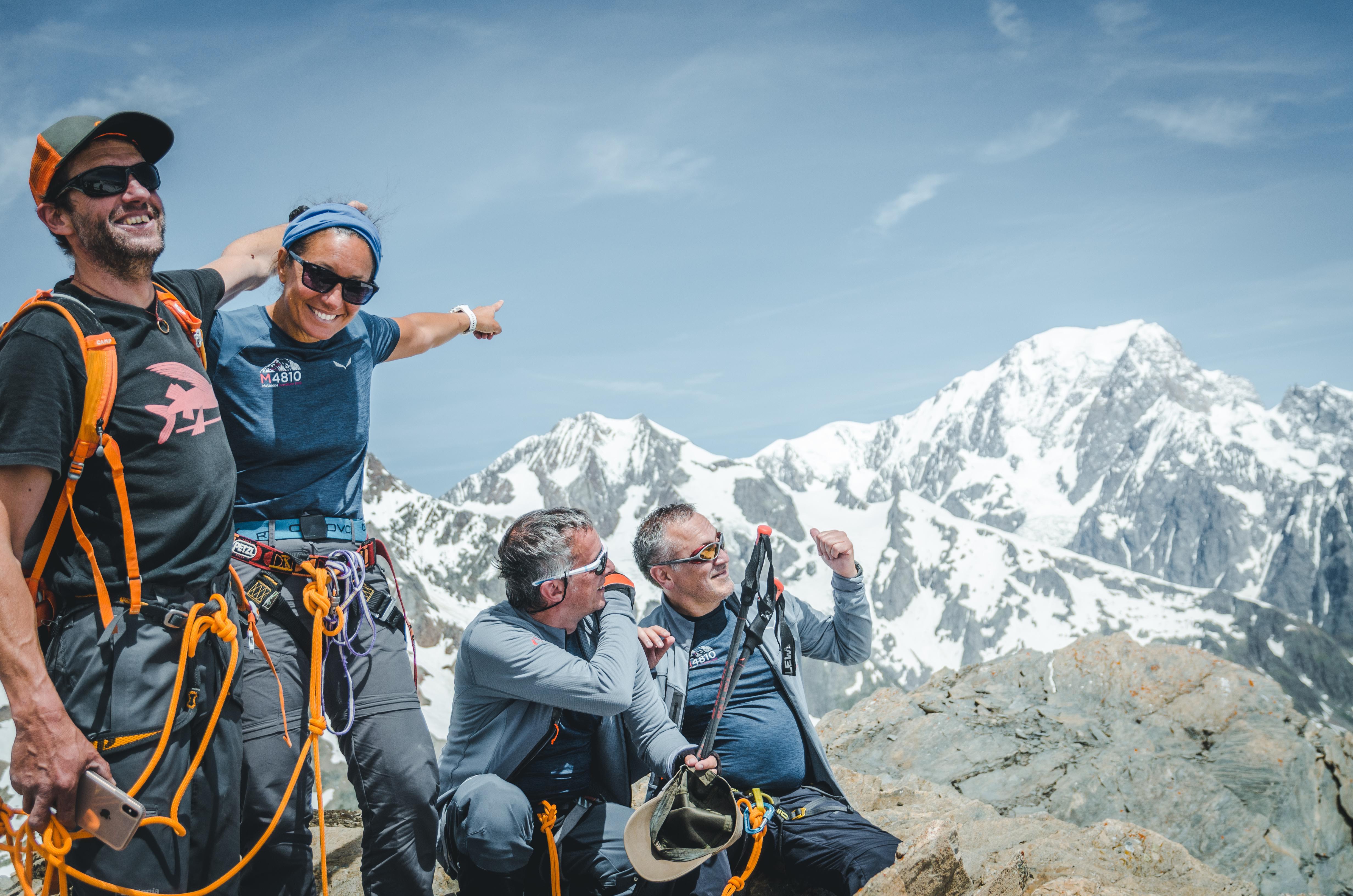
Since the early studies in the field of Organisational Behavior, in the ‘70s, the fundamental importance of teams’ success within an organization has clearly emerged as the source of the success of the organization itself.
Teams must have determined “abilitating” characteristics in order to function in contexts that require a group effort in order to reach a goal. These aren’t individual characteristics, attitudes, or personalities. The 3 fundamental factors have been, and still are: a clear direction, a strong structure, and a context-based on support. All of this is built, of course, on a shared mindset.
This is just as true in a mountaineering undertaking like M4810.
The makeup of the group is essential to the outcome. A group brought together by a rope and aiming for an alpine goal is a lasting team. And the success of its task is influenced by the same factors that we find in a company.
We’ve seen it several times in M4810: like when Sabrina fell behind, convinced about turning back, and then made it to the peak of Pointe Léchaud, joining a group whose pace matched her own.

But what is “the pace” of a roped group?
Like the abilitating characteristics of a team, it’s not an intrinsic element linked to the personality or personal preparation of an individual. Rather, it’s composed of a series of elements that characterize the link between parts of the group in terms of mindset more than in terms of physical ability.
In the mountains, the harmony of the team is fundamental. Understanding the potential of each component of the team is essential in assuring the safety and the success of the expedition. The components of the group need to find a common peramenter, as the retreat of one signals the end for the entire team. While overcoming subtle differences in terms of individual ability is possible, consistent mindset, willingness, and preparation are fundamental.
Choosing to split into two groups in facing the M4810 project was a step in this direction – in ensuring that the challenge is a stimulus, and not an obstacle, for everyone.
The goals and differences between individuals need to be understood and adjusted in order to create a common front that is homogeneous and cohesive. In this manner, successful teams can express most of their potential.
Organizations also have this double approach, especially in Change Management. There is a clear distinction between what has to be done at the individual level and what has to be done collectively. These elements need to be understood and adjusted well before building a team.
Only with a common mindset, a clear direction, a strong structure, and a context of support will the team be able to overcome individual differences and manage to reach even the most ambitious of goals, putting in place a virtuous cycle that touches even the teams around them.
Only in this way can the team – both at work and when roped – set a pace that considers both the strongest and the weakest elements, allowing each of them to give their best towards the common goal.

From that point forward, the difference is in the training.
A carefully prepared program, with specific activities, can bring both the individual and the team to grow and change steadily and continuously, according to their own abilities. This should be as close to reality as possible, training in the real context - in the company or elsewhere - in order to be an integrated part of the change.
It’s the same reason why, for alpine undertakings, training in the gym isn’t enough. There’s no machine or course that can prepare the body and the mind for the unique conditions of the mountains. Training in a sterile context isn’t enough – only building an individual and collective readiness on site will do.





